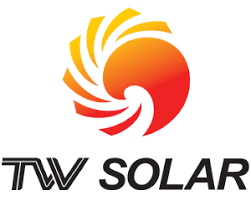Overview of Solar Panel Affordability
Solar panels have experienced significant transformations over the past decades, especially in terms of affordability. This evolution stems from technological advancements, increased market competition, and supportive governmental policies. The question at hand is: are solar panels getting cheaper?
Technological Advancements
Efficiency Improvements
One of the primary factors driving down the cost of solar panels is the improvement in their efficiency. Solar panel efficiency refers to the ability of the panel to convert sunlight into usable energy. A decade ago, the average efficiency of solar panels was around 15%, but recent models boast efficiencies upwards of 22%. This increase means fewer panels are necessary to generate the same amount of power, directly impacting the overall cost.
Material Innovations
The materials used in solar panel construction have also evolved. Initially, most solar panels used crystalline silicon, which, while effective, was costly. Recent developments have introduced thinner, more cost-effective materials like perovskite, which retain efficiency while reducing manufacturing costs.
Market Dynamics
Increased Competition
The solar panel market has seen a surge in the number of manufacturers, which has led to increased competition and, consequently, lower prices. This competition not only drives down the price but also spurs innovation, leading to more efficient and affordable solar solutions.
Economies of Scale
As demand for solar panels has grown, manufacturers have scaled up production, leading to economies of scale. This scaling means the cost per unit of solar panels decreases as production volume increases, making solar panels more accessible to a broader market.
Governmental Policies and Incentives
Subsidies and Tax Incentives
Governments worldwide have implemented various subsidies and tax incentives to encourage the adoption of solar energy. These incentives effectively reduce the upfront cost of solar panel installation, making them more affordable for homeowners and businesses.
Research and Development Support
Government-funded research and development have been crucial in advancing solar panel technologies. This support has led to more efficient manufacturing processes and the development of new materials, contributing to the reduction in solar panel costs.
Cost Analysis
Decline in Prices
Over the last two decades, the cost of solar panels has dramatically decreased. In the early 2000s, the average cost was around $8 per watt, but recent figures show prices as low as $0.50 per watt. This drastic reduction in price has made solar energy a competitive alternative to traditional energy sources.
Long-term Financial Benefits
While the initial investment in solar panels can be significant, the long-term savings on energy bills and the increasing lifespan of solar panels, which now often exceeds 25 years, offer substantial financial benefits over time.
Factors Influencing Costs
Several factors influence the final cost of solar panel installation, including the power rating (measured in watts), the size and specifications of the panels, the quality of materials used, and the efficiency rate. Installation costs can also vary depending on the complexity of the setup and the location.

Conclusion
The affordability of solar panels continues to improve due to technological advancements, competitive market conditions, and supportive government policies. This trend makes solar energy an increasingly viable option for those seeking sustainable and cost-effective energy solutions. As technology continues to advance, and as more players enter the market, it's likely that solar panels will become even more accessible in the future.